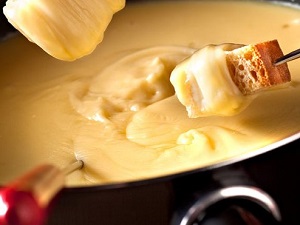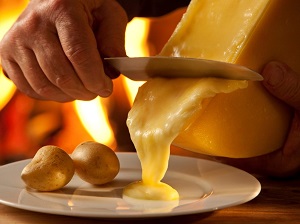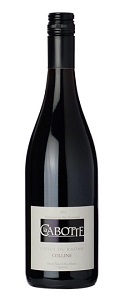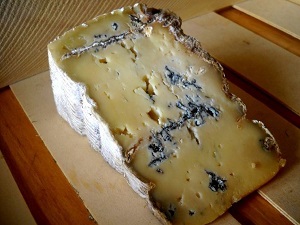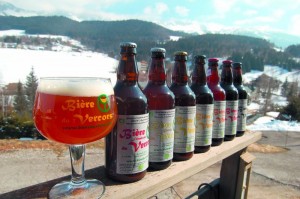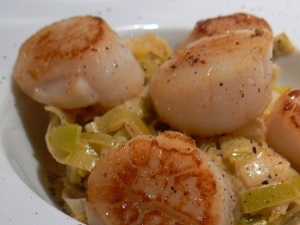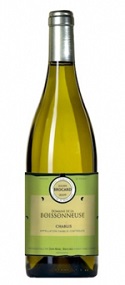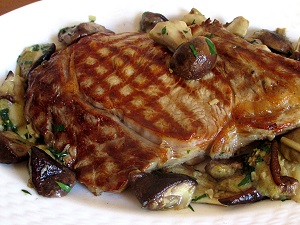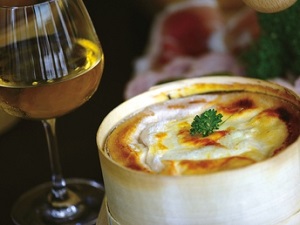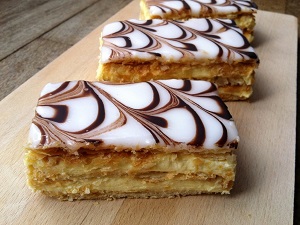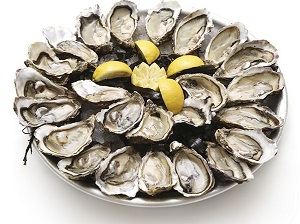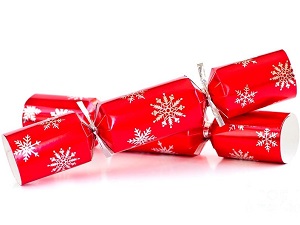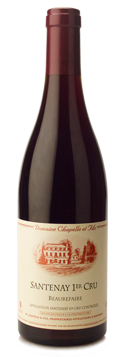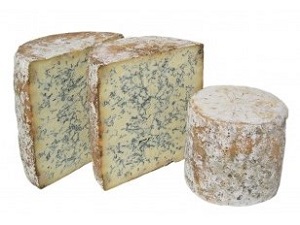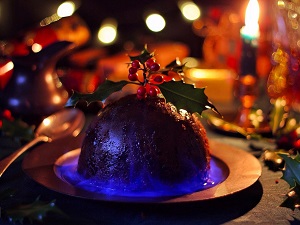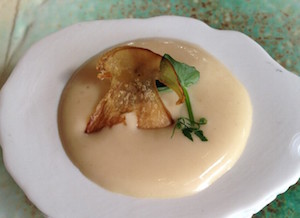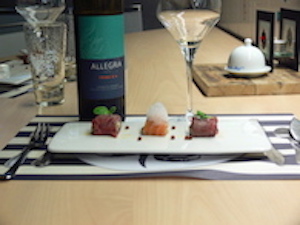Christmas Day is approaching and to give you a glimpse from a different angle of the life of a winemaker, we’ve put together this Christmas Tale to transport you around France and put you at the table of Gourmet Odyssey’s partner wineries this Christmas.
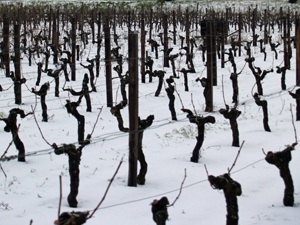
On the 25th December, it’s cold in the middle of the vineyard. The vines have lost their leaves a while ago now and some are even sporting their new winter cut to be in best shape for spring when nature will spur them back into life after the long winter hibernation period. The frozen soil cracks under the feet of the winemaker who has stepped out to fetch some wood for the chimney in the dining room. All of the family has gathered together around the big table to enjoy Christmas lunch together.
We start our journey at Domaine Chapelle in the picturesque Burgundy village of Santenay. The Christmas presents have been opened and the taste buds are opening up with the delicious smells emanating from the kitchen. A plate of Normandy oysters from Utah Beach make their entrance.
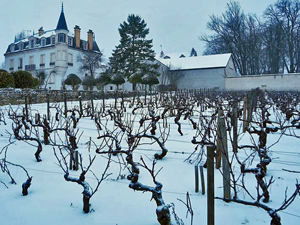
Jean-François Chapelle returns from the cellar with a bottle of 2015 Santenay Les Gravières Premier Cru white wine, made from the Chardonnay grapes that grow on the marly clay limestone slopes near the winery. “What a lovely shiny pale gold colour it has. It reveals light brioche aromas with white flower scents and a little oak. On the palate it is rich and complex, with a long gourmand finish” Jean-François exclaims.
This Santenay white wine will perfectly accompany the “Spéciales de Claire” oysters that are plump and meaty. The fullness of the wine will encapsulate the volume and bite of the shellfish.
We continue our meal with a black pudding variation at Domaine de la Guicharde in the southern half of the Côtes du Rhône wine-growing region. Appetisers of potato and black pudding, black pudding toast and caramelised onions, and black pudding and apple sauce make their way around the table. For Laurence Goudal, no doubt, the perfect match is a 2015 Terroir du Miocène to support this generous course. The wine is made from grapes grown on an ancient beach from the Miocène era. “The wine is ruby coloured and dark. It has an elegant nose, full of black fruit and spices. It is smooth on the palate. The soft tannins accompany the mineral finish that is long and persistent,” Laurence explains. The spiciness of the Grenache and Syrah accentuate the different aromas from the black pudding. It’s all delicious.
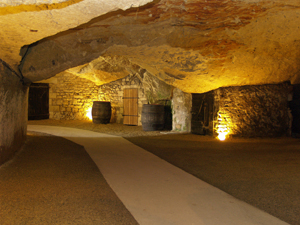
The next course is served at Château de la Bonnelière in Chinon, a charming town in the Loire Valley. It’s a classic for many French Christmas lunches, foie gras. It’s served slightly pan-fried, with a red fruit chutney and caramelised onions. Marc Plouzeau returns from the cellar with a bottle of 2005 Chinon Chapelle red for a more original accompaniment. This wine comes from a single vineyard and is made from the region’s principal grape varietal, Cabernet Franc. It’s one of the best vine plots, the soil being made up of a mix of sand and clay on a limestone plateau.
“The 2005 Chapelle is an exceptional vintage in the Loire valley. It has a deep red colour that hasn’t changed much for a wine that is 14 years old. It releases black fruit and sub-forest aromas. On the palate, the freshness surprises you for a wine of its age. The tannic backbone has started to soften, leaving a long and complex finish,” Marc explains. The silky tannins pair well with the smooth foie gras, and the wonderful aromas from the Cabernet Franc prolong the pleasure.
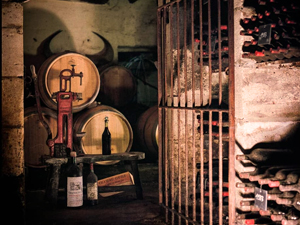
We then head to Château Coutet in Saint-Emilion for the main course. Direct from the kitchen comes a piping hot capon, stuffed with truffles and cèpe mushrooms, that is placed with fanfare on the table. Alain David-Beaulieu has kept a surprise for us. The evening before, he had brought an old treasure in from the family cellar, a bottle from the 1982 vintage, almost 40 years old. It’s a blend of Merlot, Cabernet Franc, Malbec, and a touch of Cabernet Sauvignon, from the three distinct terroir that make up the winery. The limestone plateau, the clay limestone slopes, and the sandy plain below.
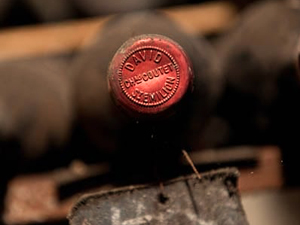
“This wine is a nice red with a slightly rusty tinge, and has kept a great colour for its age. But then it’s an exceptional vintage” begins Alain. “You can tell it’s an old wine from the aromas it gives off. Behind the still ripe fruit, almost stewed, are subtle foresty smells. It’s a very complex wine with great structure. The tannins have softened and the wine is now perfectly balanced. The minerality of the limestone plateau is still very present. It’s a wine worthy of the vintage’s esteemed reputation.” The complexity of the truffle and the majesty of the old Saint-Emilion wine is a privilege that you rarely get the chance to experience.
We journey still further south for the cheese dish at Domaine Allegria in the Languedoc region, where the sun always shines. A mixture of creamy cheeses, particularly the fresh goats’ cheeses that are so typical of the region. They are powdered with thyme or rosemary, herbs gathered from the edge of the vineyard.
Ghislain d’Aboville has chosen the 2018 Les Hautes Lumières white wine to accompany them. “On one hand we have the fresh fruity aromas and peach from the Marsanne and on the other the honeyed notes form the Roussanne. Its liveliness, structure and elegance make it an ideal match for the cheeses” he announces.
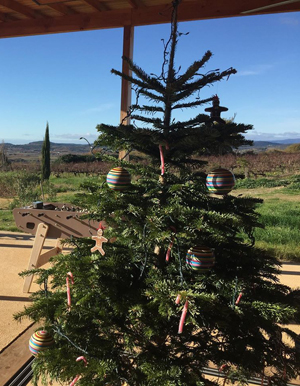
We finish our gargantuan meal in Alsace at Domaine Stentz-Buecher for the caramel crème Christmas log with caramelised apple and lemon centre. Stéphane Stentz comes back with a long thin bottle, so characteristic of the region’s wines, under his arm. It’s a 2015 Gewurztraminer Rosenberg Vendanges Tardives. Patience is required to produce these sweet white wines. “It’s a full and powerful wine with stewed apricot, peach and litchi aromas. It fills the mouth with its richness, making way for a fresh finish,” Stéphane shares with us. Perfect to match the caramelised aromas of the Christmas log.
What a wonderful treat to tour France and share this meal with our passionate winemakers, all of whom work tirelessly throughout the year to produce their excellent organic wines. Something that it’s always great to take a moment to reflect on when opening one of their bottles, surrounded by the people you love, during these end of year celebrations.



